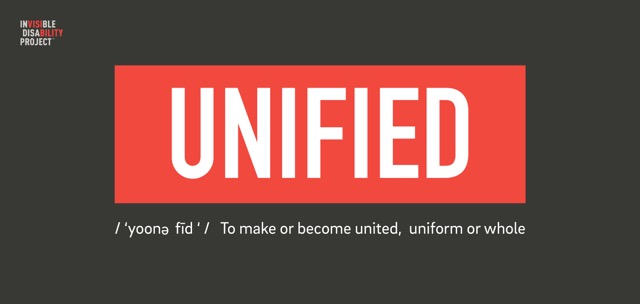By Linda Williams, Ph.D., and Monica Slabaugh / Invisible Disability Project
Disability is the tie that binds all of our intersectional identities.
Do you identify as disabled / able-bodied; straight / gay / queer; female / male / transgender / gender queer; black / brown / white / yellow; rich / poor? Our identities occur together and are lived experiences across the human lifespan. And our identities may evolve as we mature through our lives.
Our identities mark our wholeness as humans. When gender, race, disability or religious identities are socially and politically diminished, it affects the whole human. And, it affects the whole disability community.
The disability community is an intersectional community.
We are the largest minority community in the United States. We are also a community that has been fractured by outside socio-political effects of charity, medicine, bigotry and ableism. The fracturing is not just from outside of our community. As a collective, we differ on the language we use to describe our lived experiences. “Person-first ” language or “disability-first” language broadly varies, and our perspectives and political views vary as well.
To center and strengthen our collective voices, we must develop greater tolerance for our “in-group” differences.
Our strength and power as a community come from our cohesion. With all of the division out there in the world, our “home” — the place where our collective identities reside — must be safe for consensus to form and disagreements to be aired. Our strength comes from our unified voice.
Unified does not mean we are all the same.
But it does mean we come together when social issues that affect the entire community matter more than any single point of view. And when an entire community — one to which we all belong – is threatened, diminished, erased, we must unify as there is no better way to move the needle of change.
Here are few specific ideas on how to unify and move the needle on issues that
matter to you and the broader disability community.

1. Find your people.
Local community groups, Facebook communities, organized Twitter chats. We may not
agree on all things, even if we share a common goal.
2. Resist.
Organize protests. From your chair, bed or within your mind.
3. Activate.
Organize a call to action. Create public lists of elected officials, their telephone numbers, mailing address, and simple, actionable steps.
4. Participate.
Slogan creation. Sign making. Letter writing. Volunteer for larger activist organizations.
5. Document.
Activism happens over time. After several attempts, revise and reflect. Keep a
record and improve upon what is not working. Keep on with what does work.
6. Educate.
Able-bodied organizations who may engage in intersectional causes may not have
disability rights represented. Assert disability rights and language where needed with
activist allies.
7. Rest.
Activism may be emotionally and physically tiring. Self-care, especially for disability communities, is essential.
Solidarity,
Invisible Disability Project
Learn more at Invisible Disability Project.

